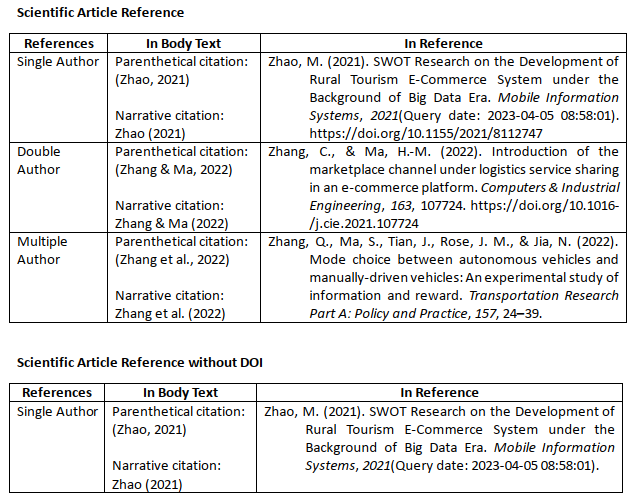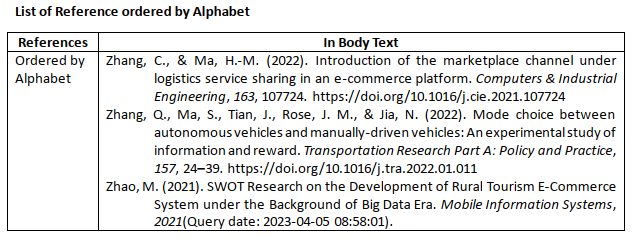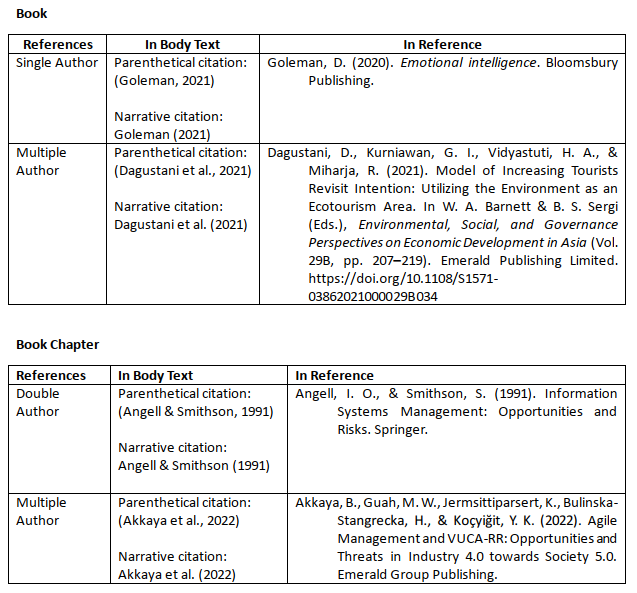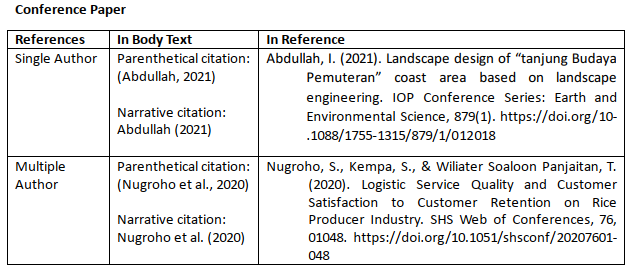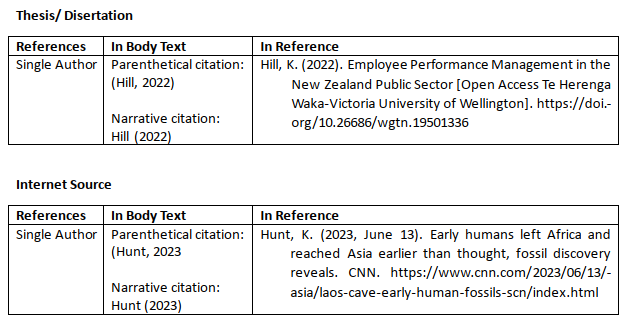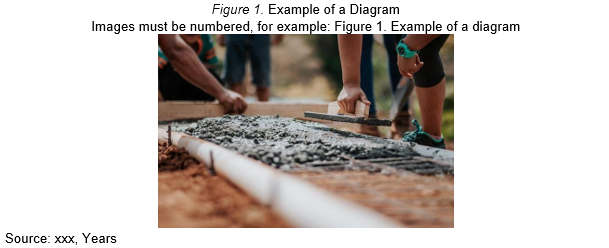Author Guideline
Jurnal Pengabdian Masyarakat is the right channel for publication of papers. Manuscripts reporting experiments or research in economics and technology will be accepted for review as papers.
Submission
Online Submissions
Author Guidelines
Copyright Notice
Privacy Statement
Author Fees
Online Submission
Already have a Username/Password for Jurnal Pengabdian Masyarakat?
Go to Login
Need a Username/Password?
Go to Registration
Registration and login are required to submit items online and to check the status of current submissions.
Author Guidelines
JPM accepts papers and articles in the field of results of community service activities. Here are some specific topics that JPM accepts:
Articles on the results of specific training programs for a particular community.
Articles on the results of Field Work Practices (Praktik Kerja Lapangan or PKL).
Articles on the results of Real Work Lecture (Kuliah Kerja Nyata or KKN).
Articles on the results of Science and Technology for Society (Ipteks Bagi Masyarakat).
Articles on the results of outreach activities.
Articles on the results of community empowerment efforts.
And other related topics.
Articles must have never been submitted or under a submission process in other journals. Articles can be written in English language.
Articles is not allowed to be presented on more than one conferences or seminars. Articles which is known to have been presented at more than one aborted conference and the lead author are not allowed to submit articles in this journal.
The manuscript of Jurnal Pengabdian Masyarakat is divided into several sections as follows: (1) Title, (2) Abstract and Keywords (4) Introduction, (5) Method, (6) Results (7) Discussion, (8) Conclusion, (9) Acknowledgments or Acknowledgments if any, and (10) List of References. Filling in the Title is required when your manuscript is ready to be published. The title of the manuscript must be clear, concise, informative, and limited to 14 words including conjunctions. Subtitles, colons, and non-standard abbreviations are not acceptable.
Title (Font: Capitalize Each Word, Arial, size 12, Max. 14 Words)
(The title should reflect the issue and focus of the engagement, the subject of the engagement, the actions and strategies employed, as well as the desired or achieved social change)
Abstract
Purpose: The primary aim of the research paper should be explicitly stated in order to provide a clear understanding of the purpose and direction of the study. Identify the problem or issue under investigation and explicate the significance of the research within a particular discipline or sector.
Method: Summarize the study's research methodology. Describe briefly the research design, data collection methods, and any analytical techniques or instruments applied to the data analysis.
Practical Applications: Examine the pragmatic consequences or uses of the research results. Emphasize the practical applications of the findings in various real-world scenarios, industries, or specific contexts, and outline any potential advantages or enhancements that can be attained.
Conclusion: Provide a concise summary of the primary findings derived from the study. Emphasize the importance of the results and their contribution to a broader comprehension of the topic or resolution of the research issue outlined in the introductory section.
Keywords should consist of 3-6 words
Introduction
The introductory section is anticipated to furnish an account of the scrutinized circumstance or condition pertaining to the topic of involvement, commonly encompassing the examined populace. The primary objective of this introductory section is to provide a succinct yet all-encompassing overview of the problem under consideration and the primary area of research. It is imperative to provide a clear justification for the selection of the engagement subject, preferably in a comprehensible manner that captivates the audience's interest in the research. This lays the groundwork for further investigation, serving as a link between the wider framework and a focused examination. The precise enunciation of projected societal changes or goals linked to the community's involvement is fundamental to this preliminary discussion. The results, which are based on both qualitative and quantitative data, ought to be consistent with the fundamental objectives of the engagement. This will establish a strong, evidence-based foundation for the importance of the research. In order to bolster the credibility of the introductory section, it is imperative to conduct a thorough examination of pertinent scholarly works. The purpose of this review is to offer a comprehensive framework for the inquiry by presenting the current corpus of literature and emphasizing the position of this specific study within the wider academic discourse. Conforming to the APA 7th Style is of utmost significance for references, as it guarantees a uniform and polished presentation across the document. When composing the introduction, it is crucial to uphold the principles of clarity, brevity, and comprehensibility. The principal objective of this section is to stimulate the reader's curiosity, establish a structure for the upcoming discourse, and furnish the reader with the essential contextual comprehension to grasp the ensuing segments of the manuscript.
Method
The methods portion of this applied research study should detail the data collection, analysis, and interpretation processes. First, explain the data collection methods. This may require detailing sample design, data collection methods, and instruments. Designing and executing processes requires several aspects to ensure efficacy, efficiency, and alignment with goals. The procedural design involves a thorough examination of the processes, identification of potential risks, and implementation of steps to mitigate them. The methods must also be easy to understand and follow for the intended audience. Please explain the data analysis procedure. Explaining statistical or analytical methods is necessary. The analytical report should detail data cleansing and preparation. Explain how the results were interpreted. Academic reports often describe researchers' data analysis methods and verification procedures. To help other researchers replicate the study, every step of the research approach must be disclosed. The organization of the methodology section requires precision and clarity.
Result
The "Results" section in a community service journal focuses on documenting the implementation of a program or project and its impact on the target community. In this section, the authors first outline in detail how the project or program was conducted, including details about the location, the involved participants, and the activities that have been carried out. Subsequently, the authors report the tangible outputs from the program or project, such as the number of training sessions held, the number of participants receiving services, or other service units that have been provided. Another key element of the "Results" section is the documentation of the program's or project's impact on society. The authors need to demonstrate how this intervention has resulted in real changes, such as increased knowledge, behavior changes, or improved economic welfare for the participants. In addition, the "Results" section should also include supporting evidence that validates claims about outcomes and impacts. This evidence can be in the form of photos from activities, testimonials from participants, survey results, or other relevant data that can help readers understand the effectiveness and impact of the program or project. Although the main emphasis in community service is usually more on tangible impacts than strict research methodology, the authors still need to provide a brief interpretation or analysis of the collected data in the "Results" section.
Discussion
Analyzing the effects and consequences of the service rendered in depth is essential for the discussion section of an applied research paper on community service. To ascertain the degree to which the basic goals of the community service have been met and the advantages that the community has reaped, the obtained results must be carefully analyzed. Furthermore, it's critical to talk about the consequences that follow from this community work. Has the social, economic, or environmental landscape significantly changed? Discuss the potential outcomes, both positive and negative, as well as any long-term effects that the community service may have. The durability of the community service program and the potential for replication in other contexts should also be covered in this discussion section. Think about the lessons discovered during the service process and offer specific suggestions for future community service that are comparable. Additionally, talk about the restrictions and difficulties encountered during the community service and provide solutions. Give examples of the specific contributions made by your community service and underline the significance of active community involvement in the program's success by contrasting them with relevant research or community service initiatives. In sum, the author is able to assess the consequences of the community service, offer insights, and reach conclusions that can act as standards for future community service and research in this discussion part. Reference using APA 7th Style.
Conclusion
The conclusion section of an applied paper serves to provide a summary of the research or experiment conducted and to draw key findings from the study. Firstly, it briefly summarizes the research objectives and goals. Secondly, it highlights the main findings obtained from the study, focusing on the most relevant and significant results in relation to the research objectives. Furthermore, it discusses the practical implications of the research findings, emphasizing how they can be applied in real-world settings to solve specific problems or provide benefits in the relevant field. The conclusion also highlights the strengths and unique contributions of the research, showcasing how it expands existing knowledge or offers novel approaches to problem-solving. Additionally, acknowledging the limitations of the study and explaining any methodological or analytical constraints is important. This lays the groundwork for future research and demonstrates an awareness of the existing limitations. The Conclusion section concludes by providing suggestions and recommendations for further research, identifying areas that have not been covered or topics that can be further explored. Lastly, it emphasizes the value of the research within the relevant field, explaining why the research findings are worth considering and how they can contribute to further understanding and development.
Acknowledgements
In the acknowledgement section of a practical paper on community engagement, there are several important points to consider. Firstly, it is necessary to acknowledge all individuals or groups who have contributed to the project, such as fellow researchers, colleagues, students, or external partners. Secondly, it is important to mention the funding sources that supported the research and engagement. This will help recognize the significant role of financial support in the success of the project. Furthermore, if the project involved active participation from the community or external partners, special recognition should be given to them. For example, if the project involved collaboration with the local community, acknowledgement should be given for their participation and contributions. Additionally, appreciation should be extended to the supporting organizations or institutions that assisted in coordinating or supporting the project. In this case, recognition can be given to the university, research institution, non-governmental organization, or local government. Don't forget to acknowledge the contributions of administrative and technical individuals or units within the institution that provided significant support. Finally, remember to express general gratitude to all individuals or parties who provided support and encouragement throughout the project, including family and colleagues. By providing honest and appropriate recognition to all parties involved, we can demonstrate appreciation for their contributions to the community engagement project
Reference
Writing a list of references 80% primary literatures (journal articles) published in recent 10 years (minimum 15 scientific reference sources)
Writing style
Article should be written in proper scientific language.
New paragraph begins after the sixth spaces from the left margin. There should be no spaces between paragraphs.
All foreign words and special terms should be written in italics, (in English-language articles, italics are used only for writing other than English).
Taping margins are; left margin: 2 (two) centimeters; top margin: 2 (two) centimeters; right margin: 2 (two) centimeters; and bottom margin: 2 (two) centimeters.
It is not allowed to give attachment. All tables, pictures, or transcripts are included in the body of articles.
Citation style within the body text and in references are as follows American Psychological Association (APA) Style 7th Edition.
Language
The manuscript you submit must be in good English and grammatically correct.
There is no vertical line for the table. The table source is placed under left alignment. The table display is as follows:
The figure title and source are placed on the center bottom of the figure. The figure is unframed. The figure display is as follows:
Every submitted article will be blind-reviewed by minimum one reviewers.
When required, the editor will change and, or fix spelling, and correct the grammar of the article without changing its substantial meaning.
Manuscripts should be submitted directly JPM OJS in https://jurnal.stie.asia.ac.id/index.php/jpm/
Article should be written in MS Word, single spaced, font size 11, Arial. Minimum pages articles is 8 pages (FULL PAGE).
The author(s) should use reference application (Zotero or Mendeley).
After the article meets the structure standards, the management team will conduct a plagiarism test using a reference application (turnitin). The author(s) is prohibited from conducting plagiarism testing without the knowledge of the management team. The maximum plagiarism limit is 30% (Submission) and 20% (Before Published). The author will be asked to revise the article if the article does not meet the maximum plagiarism limit.
Complement to the sponsors and peer discussions (if any) should be placed in Acknowledgement.
Journal JPM publish its journal 2 times in a year, on May and November. Article must be sent at least six month before the month of publication (December and June).
Please check article samples for editorial style example by registering at s.id/jpmasia

